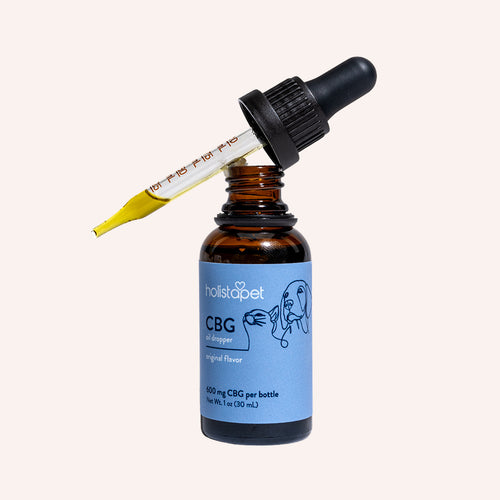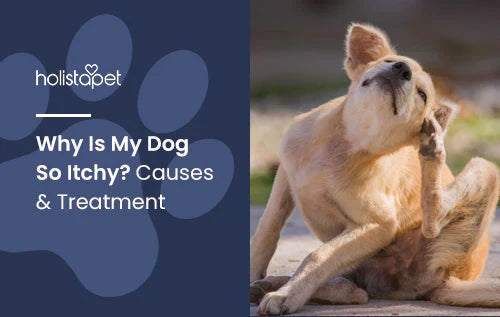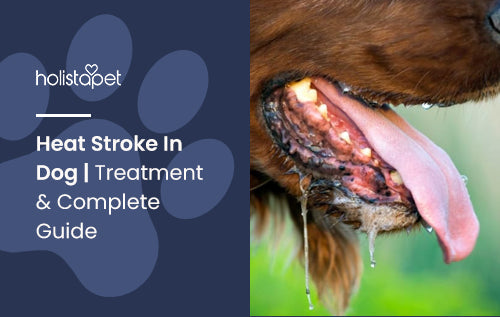Whether you have a dog or puppy with separation anxiety the symptoms will be similar, but the behavior may be an effect of different reasons. As many pet owners know, separation anxiety is very common among dogs. If you are wondering how to help a dog with separation anxiety it is important to know exactly why your dog is reacting this way when you leave. To fix the problem efficiently it helps to know what sparked this behavior.
Some veterinarians may suggest using behavioral medications. Although these treatments may work effectively, they usually come with a risk of side effects. Fortunately, there are also more natural ways to calm your furry friend. Behavior modification training can help as well. But, in order to understand solutions for separation anxiety, let’s first learn a bit more about what separation anxiety is…
What Is Separation Anxiety?
Dogs are social animals, and you are the closest thing that your pet has to a family. So, when you leave them alone, some dogs may feel abandoned. This results in an increase in stress and anxiety levels.
Sadly, as this anxiety increases it can lead to destructive behavior and even self-harm. These are the cycles and actions of a dog experiencing separation anxiety. Approximately 14 percent of dogs nationwide suffer from separation anxiety, according to the American Kennel Club (AKC). This means almost 1 out of every 7 dogs will experience separation anxiety within their lifetime.
So what is going on inside of a dog experiencing separation anxiety? Similar to humans, a dog’s mood is regulated through physiological processes in the brain. Did you know that petting your dog can release “feel good” hormones like serotonin and oxytocin within your body? When our dogs feel happy or become excited they release “feel good” hormones too.
Additionally, many dogs experience negative emotions when their owner leaves. This is partly due to the release of the hormone cortisol, which a dog’s body releases during stressful situations. High levels of cortisol are known to reduce the levels of serotonin and dopamine in the body.
Although both pure-bred dogs and mixed breeds can experience separation anxiety, some dog breeds may be more susceptible to separation anxiety than others: Weimaraners, Springer Spaniels, German Shepherds, and Labrador Retrievers may be at the highest risk. In contrast, Boston Terriers, Miniature Schnauzers, Lhasa Apsos, and Bull Mastiffs are breeds that may have a lower risk.
Why Do Dogs Have Separation Anxiety?
Before you look for separation anxiety solutions for your dog, you should first know why they develop separation anxiety. Some pet owners accidentally encourage this behavior by making a big fuss when leaving or coming home because they love their dogs so much and worry about leaving them home alone. This tends to make an already anxious dog more worried about their beloved owner leaving them and creates an association between chaotic noises and the owner’s absence. These loving pet-parents may be accidentally encouraging the puppy to be more stressed every time they leave the home.
Dog owners usually bring their young puppies everywhere with them to socialize them. Puppies look to their owners as their source of confidence and security, as well as the leader of their pack, and being left behind can cause separation anxiety in predisposed pets.
There are situations where dogs can behave in a manner that can look much like signs of separation anxiety. These include dogs that need a lot of exercise but are not provided sufficient outlets for their energy and dogs that may be acting out in a territorial manner, which can lead to chewing or scratching windows and doors or other destructive behaviors.
What Causes Separation Anxiety in Adult Dogs?
Separation anxiety in adult dogs may be the result of traumatic experiences from their past and can occur in dogs obtained from a shelter or rescue situation Sometimes, the death of a family member or another closely bonded pet in the household triggers this problem. Researchers are not sure of the exact cause. It is believed that dogs that have lived in shelters and rescues, as well as those who suffered the loss of a human friend, may be predisposed to separation anxiety.
It’s possible the previous owner mistreated the dog, either verbally or physically. Your dog may see you as the reason he is no longer being abused. When you leave, your dog may think he is no longer protected from possible abuse. In this case, the dog views you as a safe haven. It feels safe when you are present. This can cause your dog’s anxiety to rise when you are gone.
Lifestyle changes, such as moving to a new city or being left alone for too long, may also trigger separation anxiety. This problem can affect many pets, not just dogs. It can also occur in cats, hamsters, or parrots. Simply put, they’re afraid of being left alone, and any change in the family’s routine can trigger its symptoms.
Knowing how to help a dog with separation anxiety can save its life. Just imagine what could happen if your beloved friend escapes the house or injures itself. Thus, it’s crucial to identify the symptoms of separation anxiety and take the proper steps needed to prevent or treat this condition.
Signs Of Separation Anxiety In Dogs & Puppies
Dogs of all ages and breeds can develop this problem. The most common signs only occur when you are gone and can include:
- Intense pacing around the house
- Restlessness
- Nervousness
- Lack of appetite
- Urinating or defecating indoors
- Vomiting
- Destructive behavior
- Moving things around in your home
- Excessive drooling
- Digging at doors
- Scratching doors or windows
- Constant barking and whining
- Anxiety and depression
- Heavy or excessive dog panting
Often separation anxiety causes misbehavior. As a result, pet owners sometimes punish the dog instead of helping it with its anxiety condition. Although it is not unusual for young puppies to misbehave when unsupervised if these problems occur in an adult dog only in your absence, your dog may well have separation anxiety.
This disorder causes your pet extreme stress. If left untreated, it may lead to full-blown panic attacks and increased intensity of its problems.
Dog & Puppy Separation Anxiety Solutions
Coming home to find that your place has been wrecked is no fun. However, punishing your dog is the worst thing you can do. Your furry friend misbehaves because it misses you and punishing the dog when you return only makes things worse. The severity of your pet’s anxiety will determine how to approach a proper treatment.
A mild or moderate case of separation anxiety may consist of not eating, acting stressed when you leave, and can proceed whimpering or howling around your departure or return. Urination and defecation can also be signs of separation anxiety. However, if your dog completely destroys your place, hurts itself, or tries to escape, then its level of separation anxiety is likely severe.
The question is: What’s the best way to deal with dog anxiety? One source reports roughly 41% of these dogs don’t receive treatment, which only makes the problem worse. 22% are treated with medications and behavior modification.
Over 10% are treated with drugs alone. Unfortunately, like any medication, those used to treat separation anxiety have a risk of side effects. Some dogs have some reduced appetite and can get sedated when first started on some of these medications but most side effects go away on their own. Rarely, hyperthermia, rapid heart rate, diarrhea, and seizures can occur and the medication has to be adjusted or stopped. There are alternative treatments that are likely to have less risk of side effects for your furry friend.
Changing Your Departure Routine
One of the easiest ways to decrease your dog’s separation anxiety is to change the way you act before leaving them. The key point is to downplay the fact that you are leaving. Incorporating this strategy early can help you avoid separation anxiety from occurring.
Many dogs with separation anxiety lock in on certain things that you likely do before leaving them alone such as showering, picking up car keys, putting on your street shoes, etc. It can help these dogs to make those cues less likely to predict that you are leaving. For instance, try showering than hanging around and eating breakfast; or pick up the car keys and then do a task in the home instead of leaving right away. This can help decrease your pet’s anxiety since these events will no longer make him as worried that you are about to leave.
Don’t make a fuss when you’re walking out the door. Stay calm and walk away without giving your pet hugs and kisses. Act like you are just going out to check the mail. Eliminate stressors that may affect him: This includes harsh verbal punishment, shock collars, choke, or “pinch” collars.
It can also be helpful to leave your pet with a distraction. Try leaving the radio or television on in the morning before preparing to leave and also while you are away. Giving them a high-value toy or food puzzle can also divert their attention as you leave and actually make your departure a good thing for the dog.
If your dog is experiencing separation anxiety, it is best to continuously change your routine when you leave so your dog cannot recognize the cues that you are about to leave.
Counterconditioning
If your pet experiences mild separation anxiety, counter-conditioning is one of your best solutions. Counter-conditioning is the process of changing the dog’s anxious reactions into something that is relaxing, calming, or rewarding.
This process allows you to create positive associations with people, situations, or other animals that would normally create anxiety in your pet. Counter-conditioning takes time before your pet learns that what it has feared is actually good.
Counter-conditioning dogs with separation anxiety involve associating something good with being alone, such as a favorite food. For example, when you leave, you can give your dog a puzzle toy with tasty food stuffed inside.
The food you can put inside puzzle toys include frozen bananas and cottage cheese, canned dog food, low-fat peanut butter, or low-fat cream cheese, among other dog-friendly ingredients. Try adding a CBD dog treat to help with anti-anxiety.
It’s important that you remove the toy as soon as you come home, and that the dog can only have it when you are away. Keep in mind that, in general, counter-conditioning alone only works with mild cases of separation anxiety since your dog will not likely be interested in any food puzzle is already in a full-blown panic.
Desensitization
If your dog’s case is a bit more severe, desensitization is one of the most effective separation anxiety solutions to combine with the counterconditioning above. Desensitization is the process of gradually accustoming your dog to very short separations that don’t result in anxiety attacks, but that you make very gradually longer with time. Once the dog becomes accustomed to you being gone for a short time, you can slowly increase the duration of the time he is separated from you.
Natural Remedies For Separation Anxiety
There are a variety of natural remedies available on the internet. For your convenience, we have gathered some separation anxiety remedies based on natural products. These treatments may help to naturally calm your dog and relieve anxiety.
Chamomile
This is a natural herb widely known for its anti-anxiety properties. Chamomile is also capable of easing an upset stomach – which can be a symptom of nervousness. Its calming effects are most likely due to the antioxidant apigenin. Chamomile contains high levels of apigenin, which has the ability to attach to specific receptors in the brain and reduce anxiety.
Valerian Root
A natural herb that can act as a mild sedative. Humans use this herb to relieve insomnia, stress, and anxiety. It works similarly in dogs. However, Valerian Root may cause certain side effects when combined with other prescriptions. Therefore, it is advised that you seek your veterinarian’s advice before using this herb.
L-Theanine
This is a natural amino acid that is mainly found in tea leaves, but it can also be found in certain types of mushrooms. L-Theanine can naturally help calm a anxious dog while avoiding drowsiness. It has the potential to improve mood and reduce physical and mental stress.
Holistapet – CBD Dog Treats +Stress & Anxiety Relief, are made with all-natural ingredients and contain no gluten, dairy, or GMOs. CBD dog treats for anxiety are infused with Chamomile and L-theanine, which help promote alpha wave generation and reduce stress. This combination of natural herbal remedies, like CBD dog treats, creates a powerhouse to combat separation anxiety in dogs.
Combining Separation Anxiety Solutions
When using natural remedies to combat separation anxiety, adding behavioral modification will always give you and your dog the quickest results. You may find success by combining different behavioral modification therapies. Many dog owners find their best success comes from combining behavioral modification with a natural herbal remedy or treatment.
If your dog has a more severe case of separation anxiety, then combining different treatments will most likely be necessary but it is best to be sure your pup first gets a clean bill of health from your family veterinarian. Depending on the severity, treating serious separation anxiety can become a complex process, and there are times when you may need professional help to get positive results. If not done just right the procedure can backfire, making the dog more stressed. You can employ the services of a board-certified Veterinary Behaviorist (DACVB) or a Certified Applied Animal Behaviorist (CAAB) for your dog or puppy with severe separation anxiety to get the best outcome.
If your dog suffers from a severe case of separation anxiety and you have to leave for a long time, it is best to leave him with a friend or neighbor. Dog daycare centers are a good choice as well. These may be your best option until you are able to reduce your dog’s separation anxiety to a manageable level.
Separation anxiety doesn’t go away overnight. It can take weeks or even months to reinforce new habits in your pet and reprogram how he feels being left alone. The key is to be consistent and work on desensitizing your dog slowly. Try to identify the root cause of your pet’s anxiety and refrain from punishments.
For more tips on how to help your pet check out this useful resource.

![How To Help A Dog With Separation Anxiety [ Unlimited Guided ]](http://www.holistapet.com/cdn/shop/articles/help-a-dog-with-separation-anxiety_1_5c2706f0-ec27-410c-b1d3-2fbf55d15385.webp?v=1738284425&width=1500)
 CBD Oil for Dogs - Fast Acting
CBD Oil for Dogs - Fast Acting
 Chicken Flavored CBD Oil For Dogs - Easy Dose
Chicken Flavored CBD Oil For Dogs - Easy Dose
 Salmon Flavored CBD Oil For Dogs - Highly Rated
Salmon Flavored CBD Oil For Dogs - Highly Rated
 CBG Oil for Dogs and Cats - Loved by Thousands
CBG Oil for Dogs and Cats - Loved by Thousands





Leave a comment
All comments are moderated before being published.
This site is protected by hCaptcha and the hCaptcha Privacy Policy and Terms of Service apply.